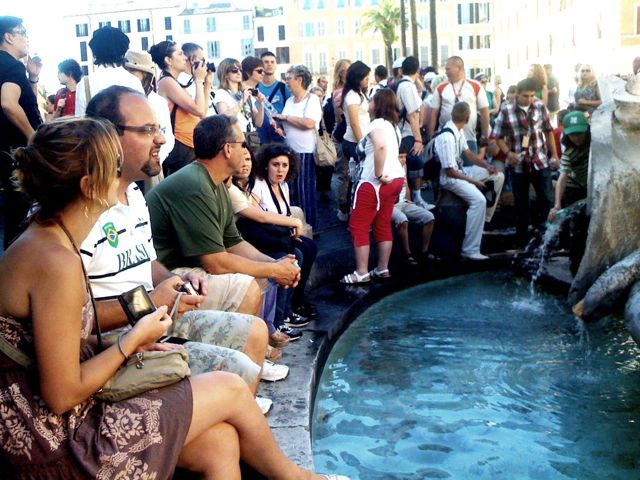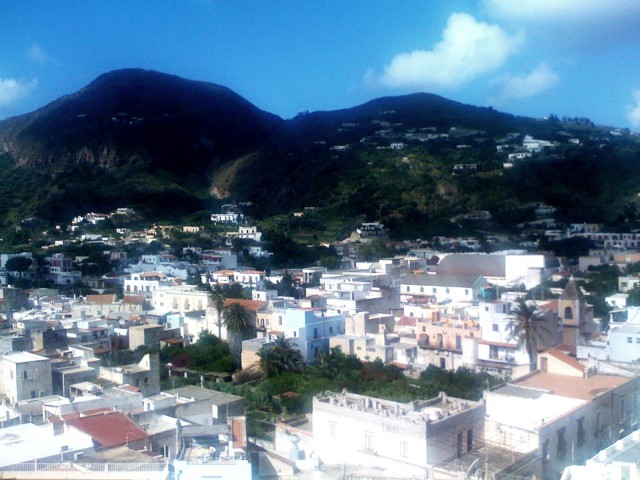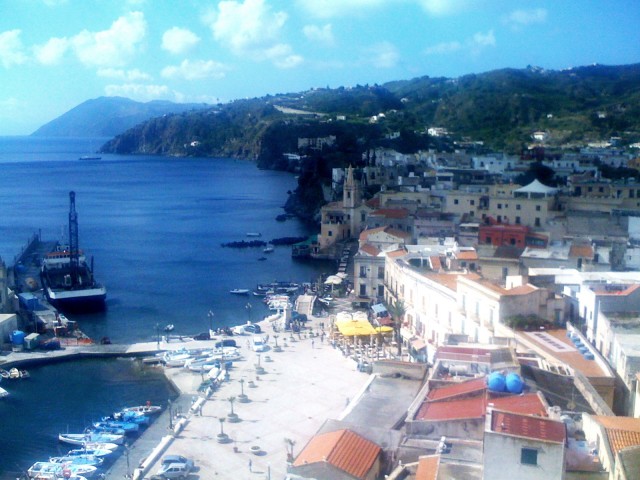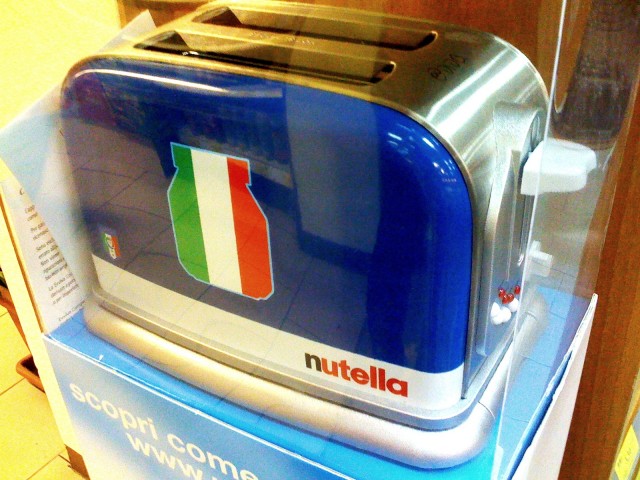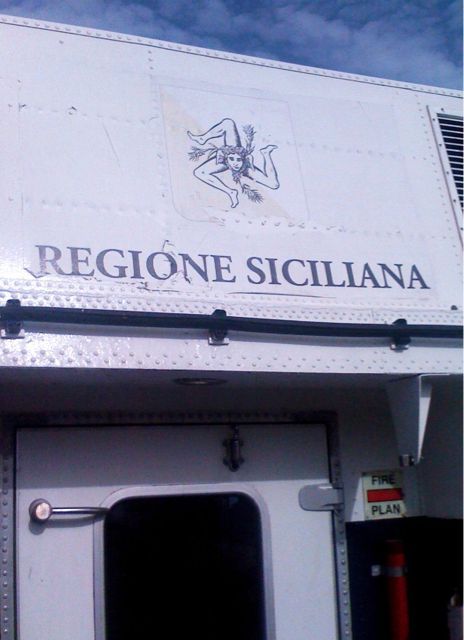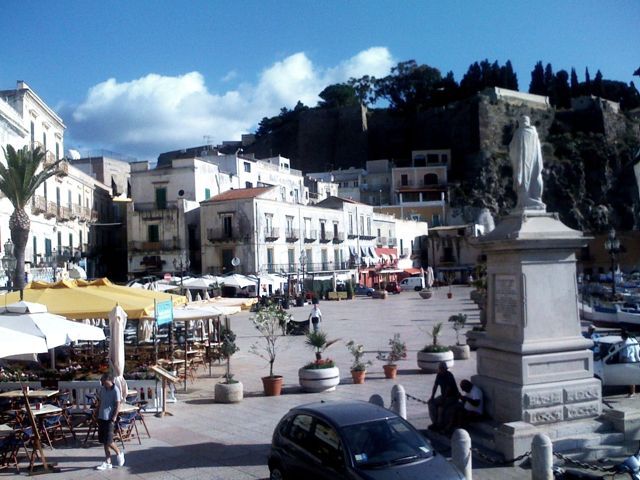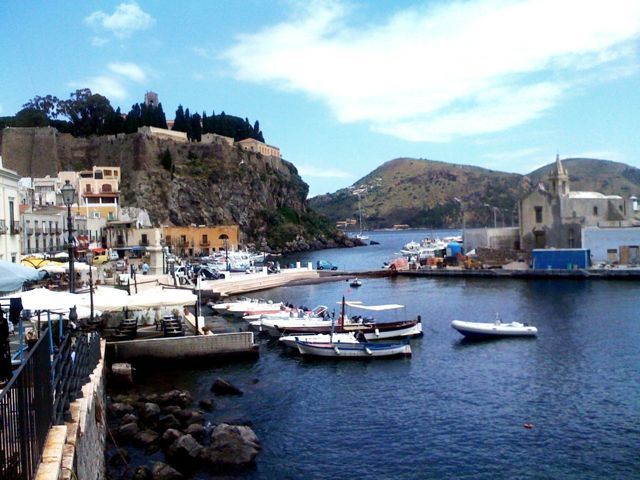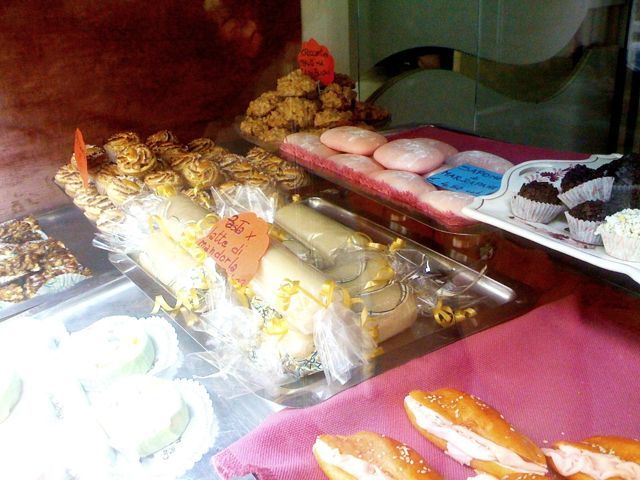Posted by chantzis on June 22, 2010
The regular passenger boats are still not running between Lipari and Messina, but some old, slow vehicle transport boats are – although not to Messina where we need to depart for mainland Italy from. We’ve got ourselves tickets to depart, when the very late rustbucket finally arrives.
What a long journey this is, destination Militsa. Although Sicily was a neighbouring Greek colony (Lipari’s fortified old town was built by the Greeks in 350 BC), it seems to take longer to get from Messina, Sicily to Messinia, Greece, than it did back in the day. I think it would definitely be faster to row, even if one oarsperson had stitches in their toe:
Tuesday:
11:30 Board the 10:05 boat to Milazzo, Sicily.
14:50 Bus from Milazzo port to the train station.
16:00 Train from Milazzo to Messina Centrale.
17:10 Ferry from Messina to Villa San Giovanni (although the train gets on the same ferry, this time we must enter as pedestrian passengers..?)
23:58 Sleeper train (no beds though) to Bari.
Wednesday:
07:45 Train arrives in Bari.
08:40 Find a bus to take us to the port.
17:00 Board ferry bound for Patras, Greece.
Thursday:
12:30 Ferry arrives in Patra.
16:00 Bus departs for Kalamata.
19:50 Bus arrives Kalamata.
20:00 Bus departs for Pylos.
21:30 Bus arrives Pylos. Scrombolas picks us up!
22:00 We arrive in Militsa!
58.5 hours! Although it really was much easier than it sounds. And there was a shower on the boat that we utilised, in case you were afraid we’d turned out like those blokes on the slot machines we saw in Messina.
Photos: Goodbye Lipari!;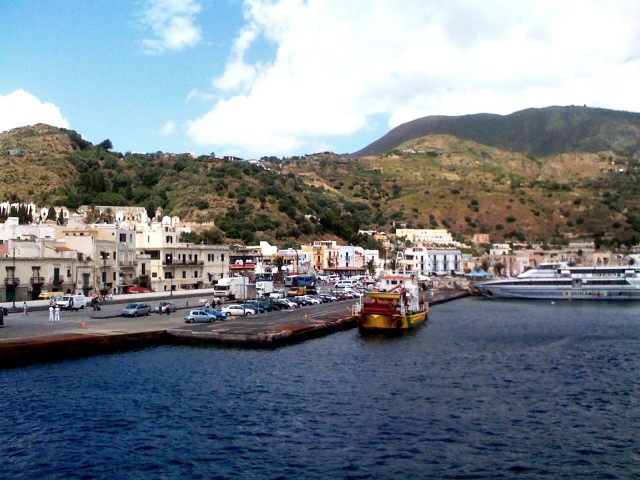
Benedict overlooks the port of Messina as we leave Sicily on a ferry for the mainland;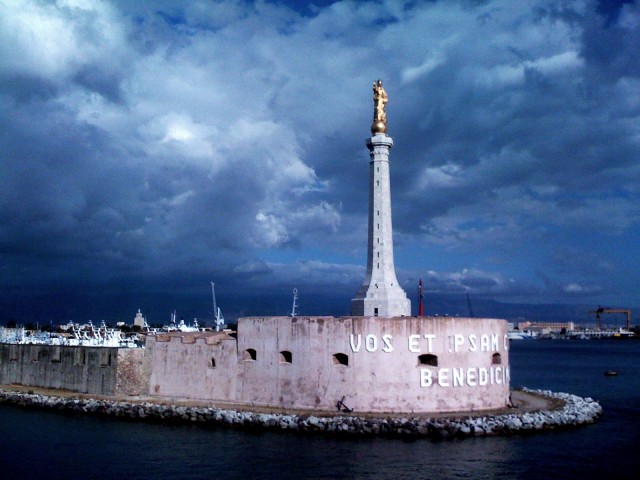
Train carriages being loaded into the ship for the very brief water crossing;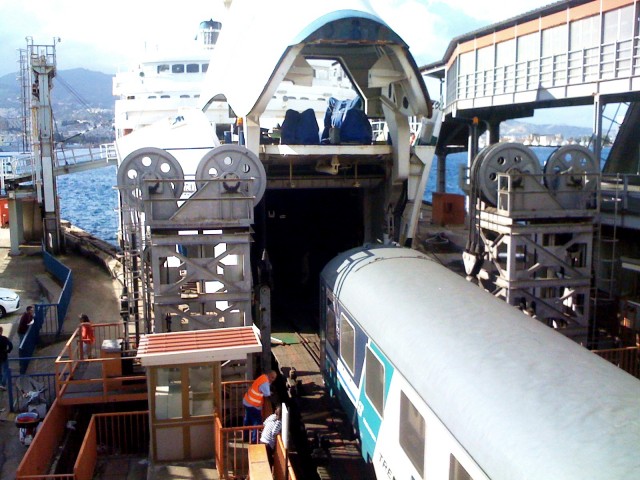
Waiting for another night train;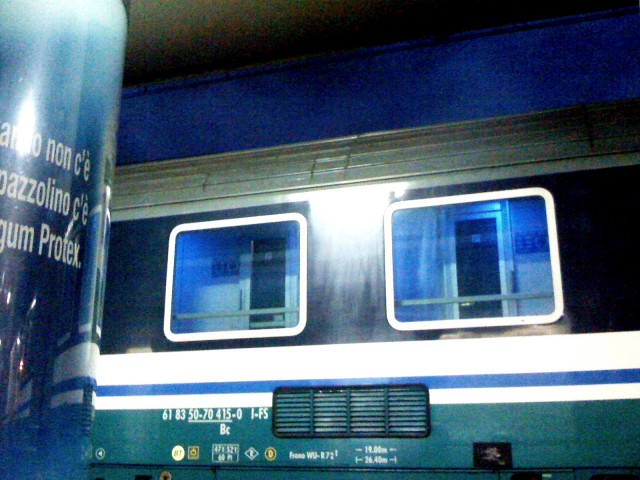
Hunting for supplies for the Italy-Greece ferry ride, I stumbled upon what must be Bari’s Duomo. I think I’ll have to create a new page on this blog just for Duomos. 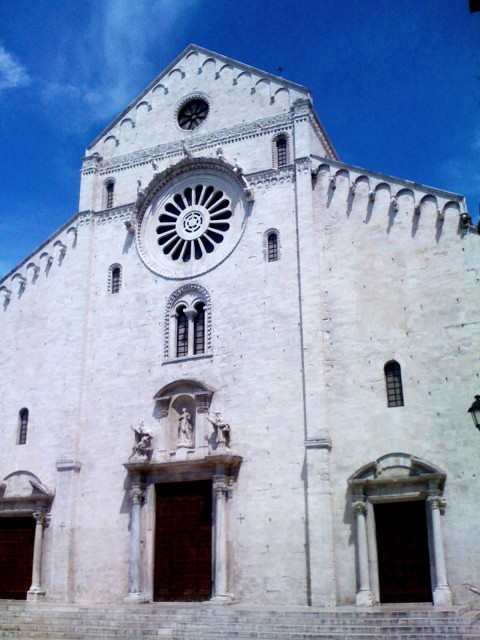
Posted by chantzis on June 21, 2010
The winds really picked up and no boats were leaving the Island. We had planned our departure today and had packed and gone to the port, so fortunately the room we stayed in was available for another night. Alessia very kindly gave us a discounted rate since she seemed to sympathise with us being at the mercy of the weather. So, we took the opportunity to visit Quattropani, which our research suggested was the birthplace of a couple of Gemmolas, and we hoped to find some more Gemmola evidence in the cemetary there. After scouring both Acquacalda and Quattropani cemetaries to no avail (although there were many unmarked graves that were likely of the era we were looking for, the 1800′s), we continued on a beautiful drive around the island, finding ourselves back in Lipari town before we knew it.
We visited a shop where an older couple whos telephone directory we asked to borrow told us about the Hunziker connection, but not how Clelia Gemmola might have been related to Vincenzo. The lady told us she remembered when Clelia met Mr Hunziker, a wealthy Swiss man who painted (but may not have made his fortune that way) down at the northern port of Lipari. The Hunziker grand-daughter had just passed away in the last month at the age of 53. (And there are no Gemmolas in the phone directory.)
A very windy view of neighbouring Selina island: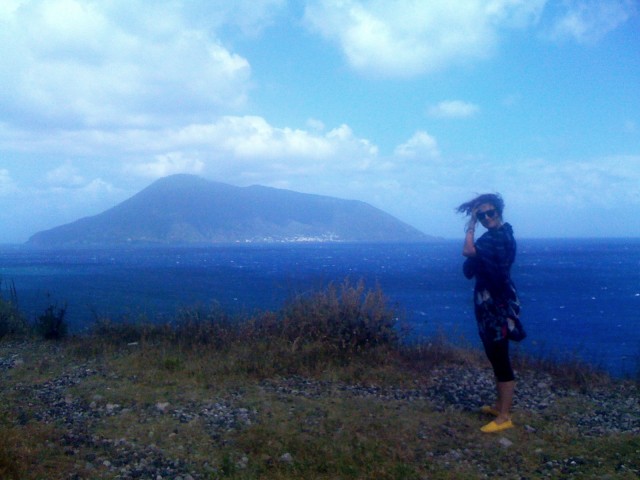
Posted by chantzis on June 20, 2010
Posted by chantzis on June 19, 2010
Today has been one of the best days of our trip. I managed to get Gemmola out of bed early this morning for a quick breakfast before beginning an expedition to the Lipari cemetary. We were going to find as many Gemmolas as we could!
Luckily we hit a major jackpot early on. Otherwise we may have tired quickly and decided to give up the search of what turned out to be a very large cemetery to find some shade. Finding Martina’s great-great-grandfather Vincenzo Gemmola (d. Lipari 1927) within 15 minutes of starting this daunting task (!!) gave us the inspiration to keep going. In addition to Fenechs, Trimbolis and many Bivianos, there were numerous finds that pointed to my Gemmola.
The second major find was Nunziata Strangio (died 27/8/1934 aged 81), Martina’s great-great-grandmother – Vincenzo’s wife!
And also: Angela Gemmola, daughter of Vincenzo – Peter’s grandfather’s sister (married a Bargellini, 1/3/1881 – 3/12/1968); a few Pinzones, and some Ravesis too. Then, on a final pass up the top end where the family tombs were, we found an unknown link. It was the tomb of the Gemmola and Hunziker families! They must have been cousins or siblings of Vincenzo. Inside were Marianna Assunta Gemmola (16/8/1898 – 17/7/1981), Clelia Gemmola (20/1/1905 – 10/7/1989), Giuseppe Gemmola (16/2/1882 – 1/2/1959), Nicola Gemmola (16/2/1853 – 24/1/1937), as well as Mariannina Costa (sposata Gemmola) (1862 – 1917), Anna Calabrese (1928 – 2004), Sandro Hunziker (11/11/1926 – 16/12/1985), and Edwin Hunziker (3/4/1901 – 13/3/1986). Pheww!
After coffee and a stroll we made some delicious sandwiches from local produce dipped in olive oil so good it could have come from Greece. Now we are lying on a small beach a stone’s-throw from our room, where we’ll until it’s time to head to the square to watch Australia try not to flounder again in the world cup. (And a belated congratulations to Greece on their last game – unfortunately we missed it and just picked up the scores today.)
We got some nice detail photos of this catacomb with Vincenzo’s medal-adorned portrait on it; 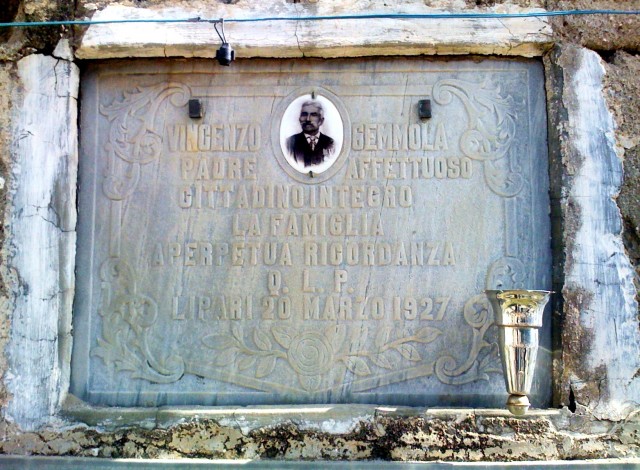
Vincenzo Gemmola, probable war hero;
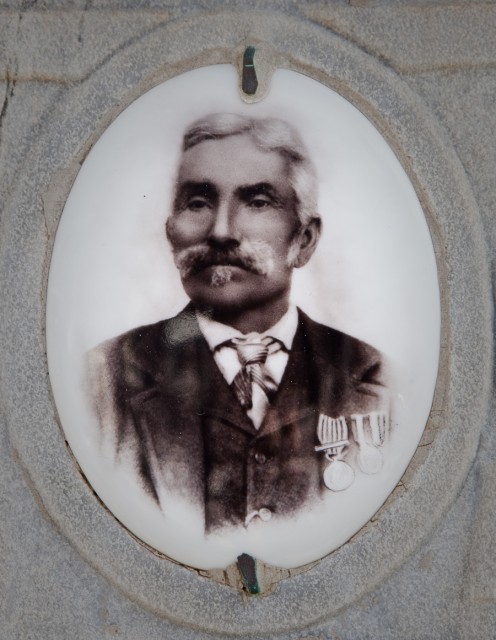
Some family tombs at the top of the cemetary; 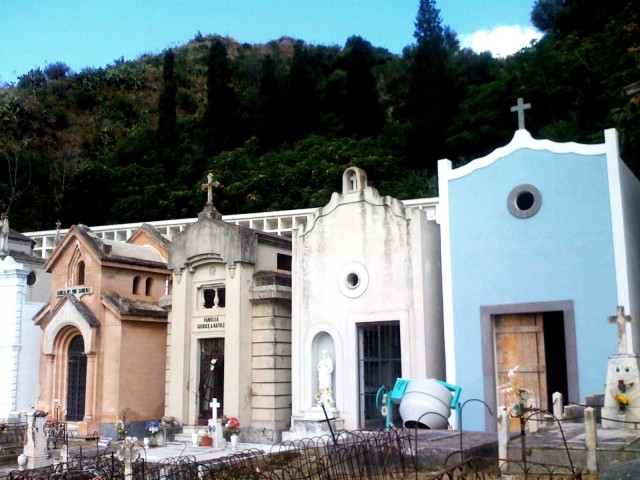
Among the family tombs, the surprise find of the ‘Famiglia Gemmola e Hunziker’, which was directly adjacent to the Fenech family tomb; 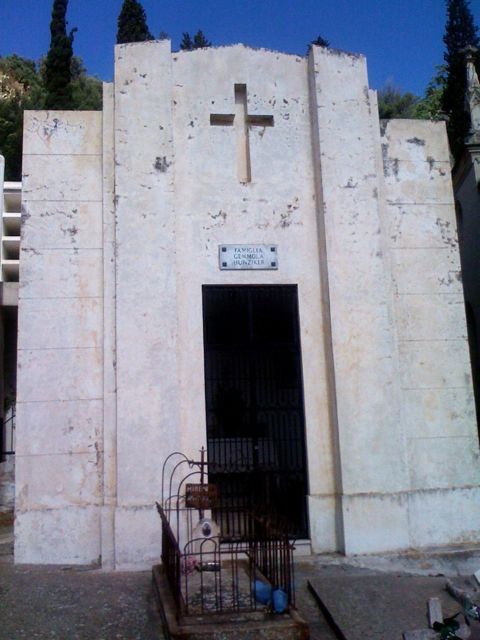
The family tree – the Vincenzo we found today is at top left.
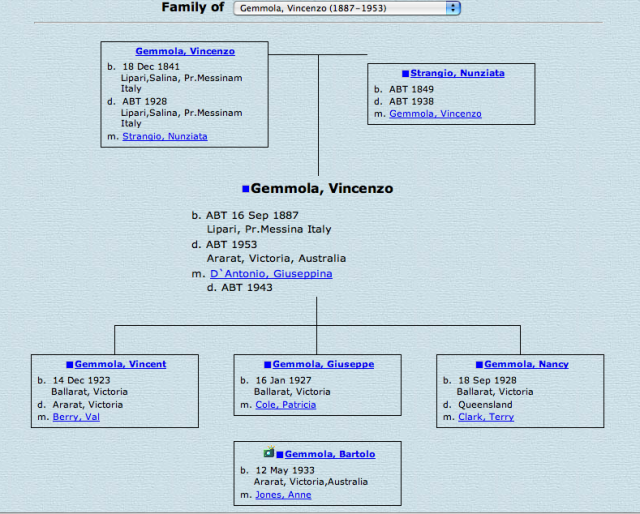
Posted by chantzis on June 19, 2010
I had the pleasure of removing Gemmola’s stitches this afternoon. I’ll try to upload the video of the event for those who are interested. It closed up quite well.
We’re in the seaside square of Lipari. The local youths were so bored by the Australia vs Ghana match (the cafe next to us didn’t bother turning their TV on and instead spent the game adjusting and readjusting a shiny new Italian flag, for tomorrow’s Italy game) that they started up their own, very serious game, in the square. Up the other side of the square a traditional wedding is going on and the newlyweds are leaving the church down a green carpet as rice is showered upon them.
The highlight of the Australia vs Ghana match was the Italian commentary. Listening to them pronounce ‘Chipperfield’ was nearly as priceless as one commentator likening the appearance of the Australian player Kennedy to Jesus.
Lipari – a beautiful place for a wedding;
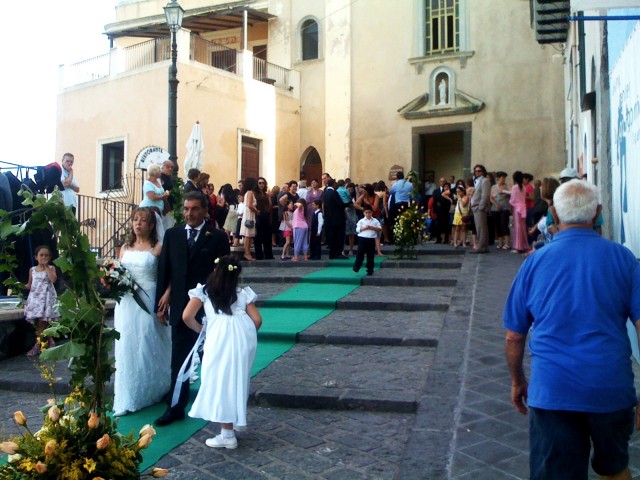
A previously unreleased photo of the freshly-stitched toe; 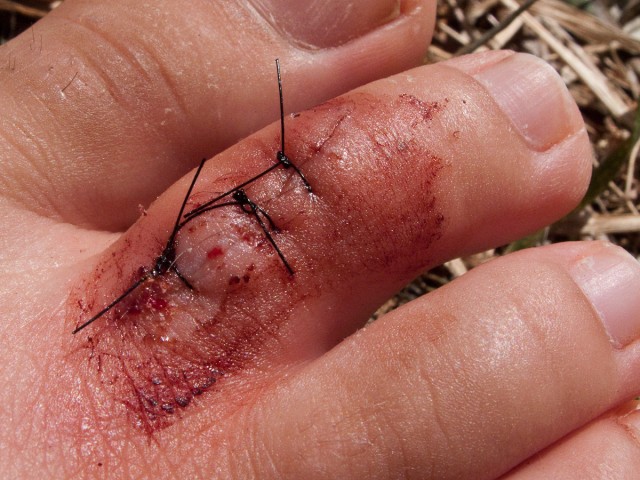
The same toe, eight days later, just before I had the pleasure of removing the stitches (video to be uploaded to the videos page soon!)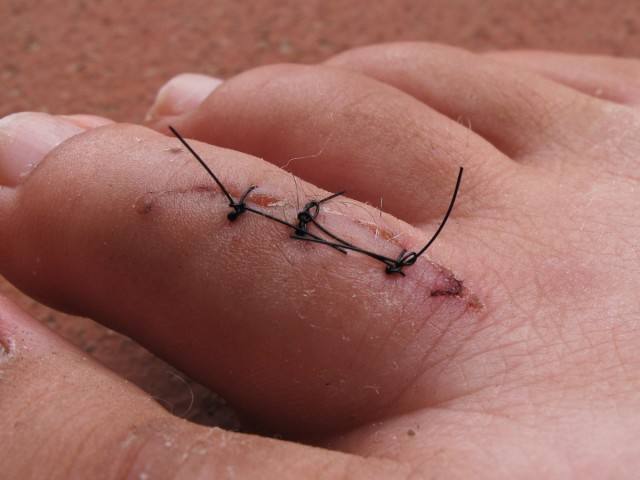
Posted by chantzis on June 18, 2010
Posted by chantzis on June 18, 2010
We had to pay a fee on top of our eurail pass to get a couchette on the overnight train to Messina, Sicily. After much frantic running around by the conductor to ensure eeryine had sheets, pillows and water, we crawled into bed. Soon the rhythmic clack of the tracks had us asleep. At some stage the gentle rattle of the train ceased and a gentle pitch and roll began, with the dull groan of large diesel engines in the background.
A knock on our door – a wakeup call and the return of our tickets, which were taken from us last night. Looking out the window, we could see that the train had been shunted into a ship and we were now pulling into port in Messina, Sicily. The train backed out of the hold as if were a perfectly normal thing to do. How many places in the world load trains full of sleeping passengers into ships for water crossings? (And when will Berlusconi build a bridge?)
I’m not quite sure what the emergency evacuation plan for this one involves…
Early morning arrival in Messina, we waited for our boat connection to Lipari. In the local coffee bar where we stationed ourselves we were joined by two dishevelled men who proceeded to spend what looked like their life savings on the poker machines right behind us. Fortunately my sinuses were still blocked but Martina suffered from the odor of them. (Somehow she often manages to attract the most gruesome, malodorous spectacles to her immediate vicinity – I suppose that includes me.) We didn’t last long here – the men were in it for the long run. They were dressed for a winter war in the Balkans, and their odour suggested they might have even survived one.
Waiting to board the night train to Sicily at Roma Termini station;
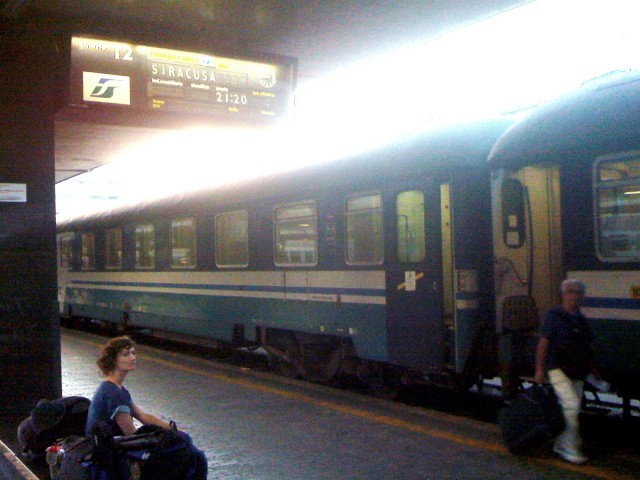
A beautiful sunset at Termini;
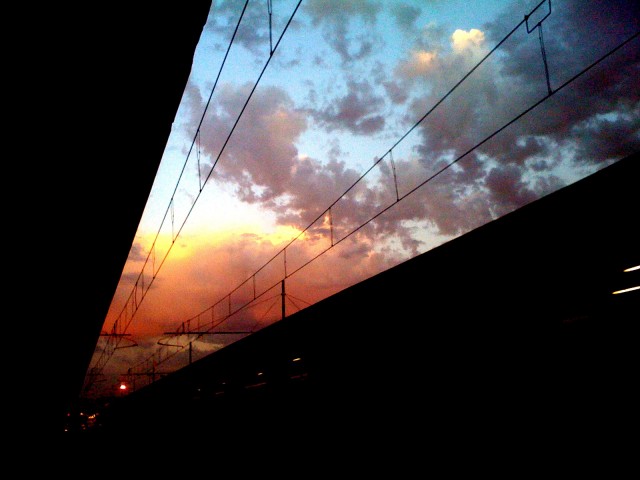
Marti tries to avoid the odor of the men playing the pokies in Messina.
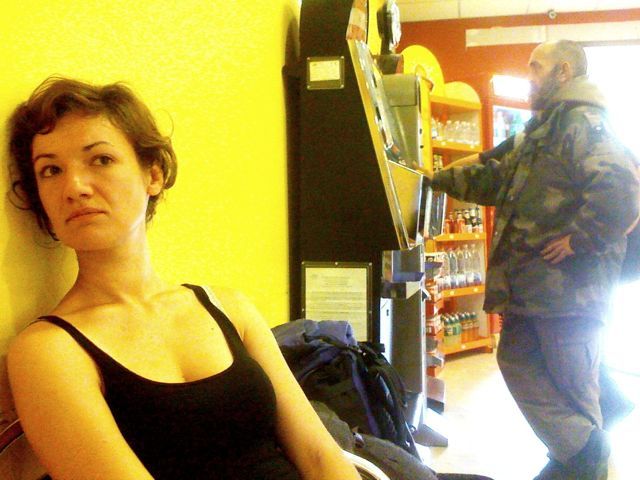
Posted by chantzis on June 17, 2010
We were quite tired today. All this moving is wearing us down. We’re looking forward to spending more than one or two nights in the one place (Lipari). All we really saw today was the Colosseum, but still did much walking, getting a fresh book for the bookworm Gemmola, and familiarising ourselves with another place just as we are preparing to leave.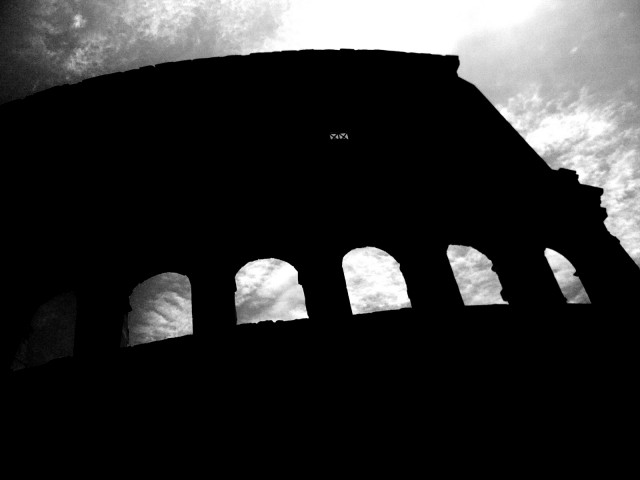
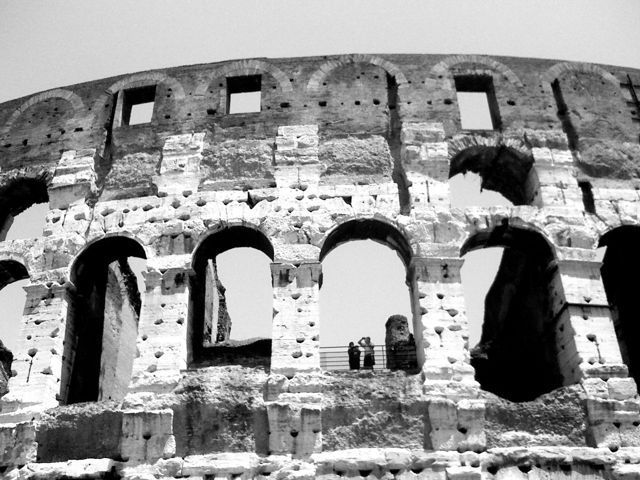
Posted by chantzis on June 16, 2010
Athena, or any statue, with painted eyes is scary.
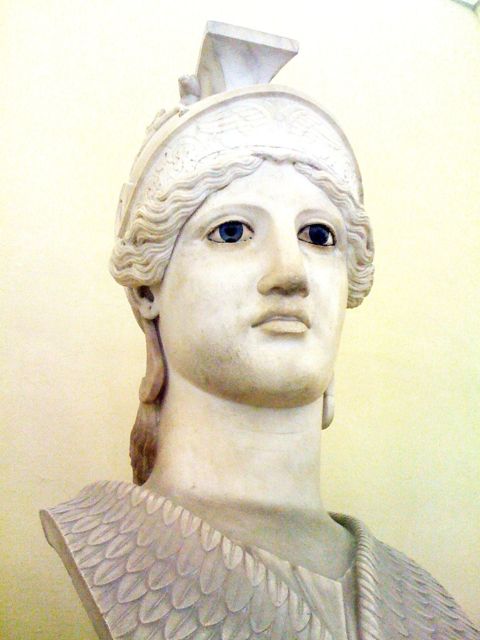
My good friend Periklis.
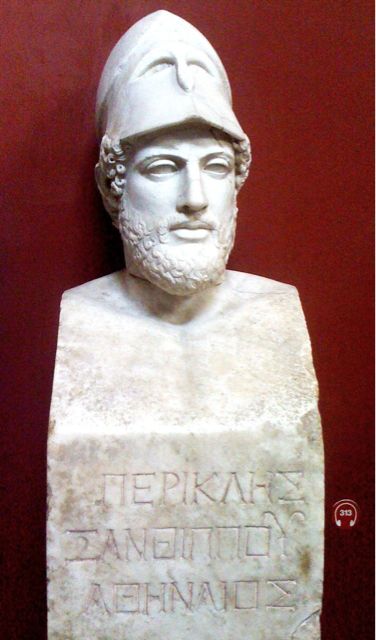
A Papal procession in bronze.
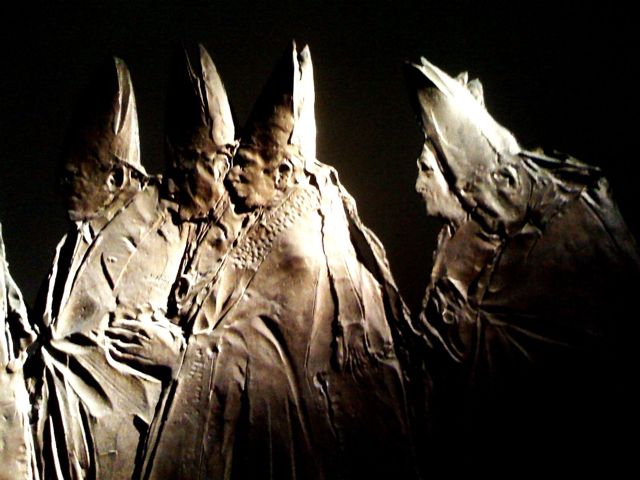
How is the vine leaf kept in place?
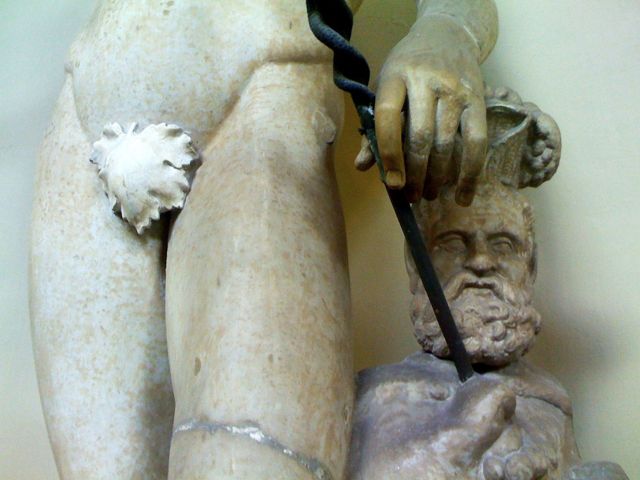
Gemmola’s future bathtub.
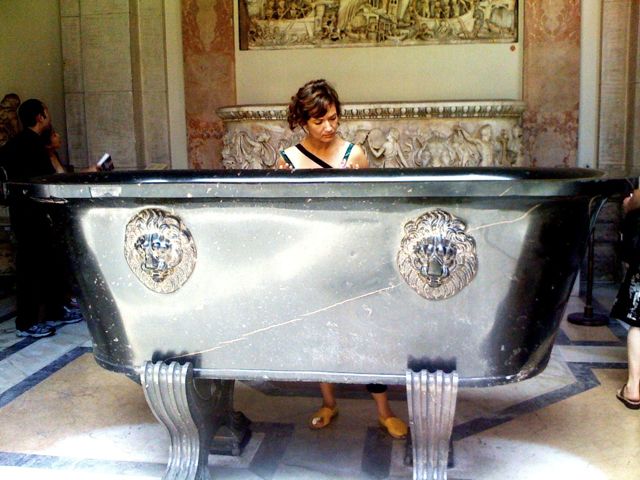
Gemmola’s future career..?
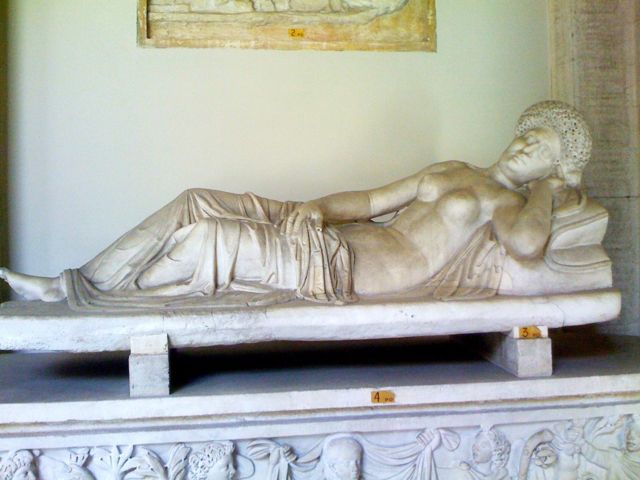
The room of the Immaculate Conception.
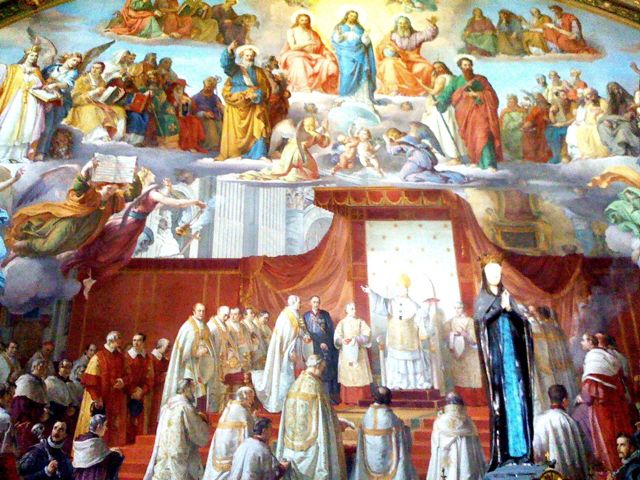
“E.T. Phone Home”
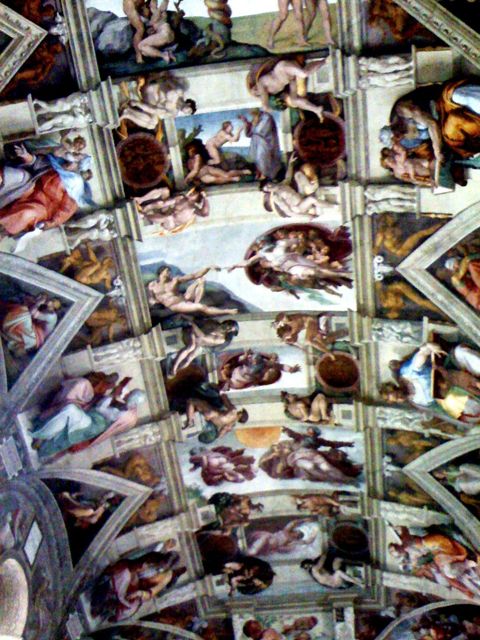
What a life – a cherub on the ceiling in the Vatican.
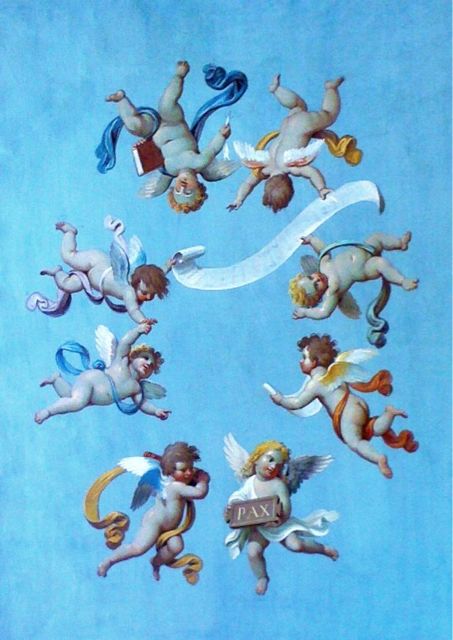
Posted by chantzis on June 16, 2010
There are too many tourists in Rome. I could not live in a city with such constant, slow crowds on the street. It’s hard to move, to do anything.
Every time I turn my back, she’s gone. Always to be found at the coffee bar.
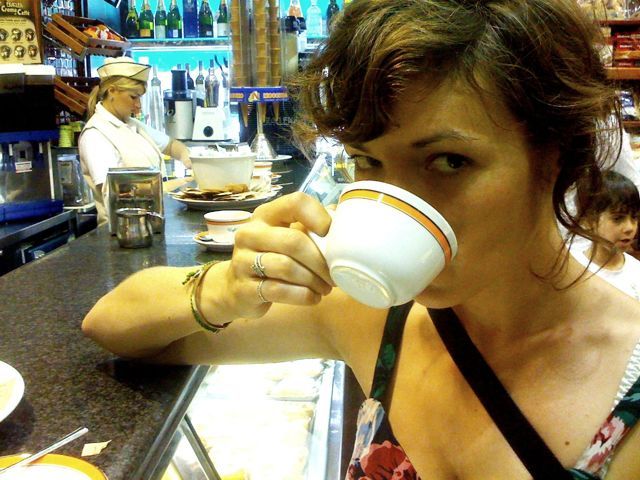
A successful train every minute…
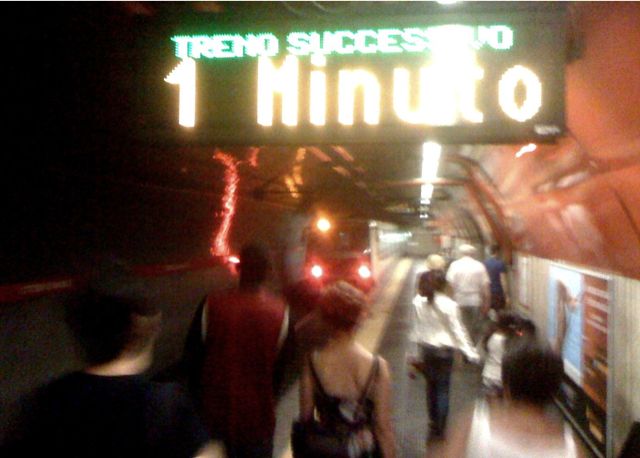
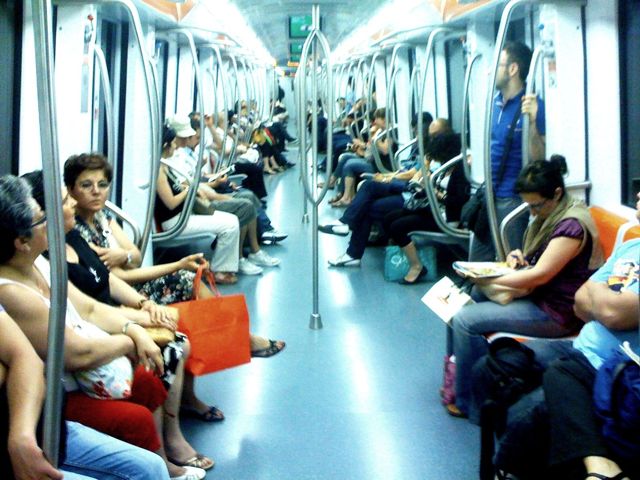
It seems Greek soccer hooligans have been to Rome recently.
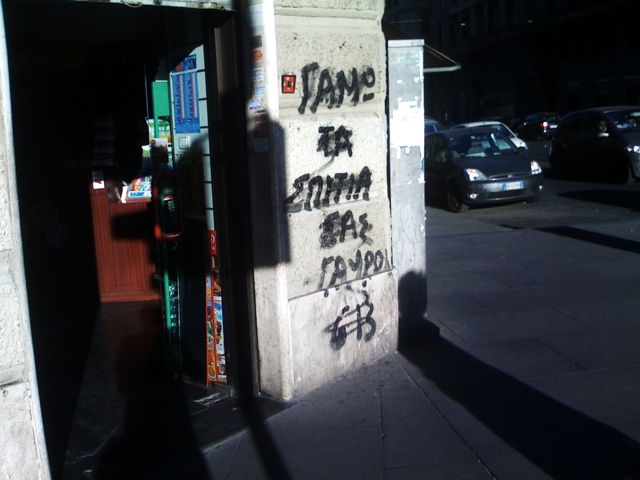
You can tell it’s Gemmola by the yellow shoe.
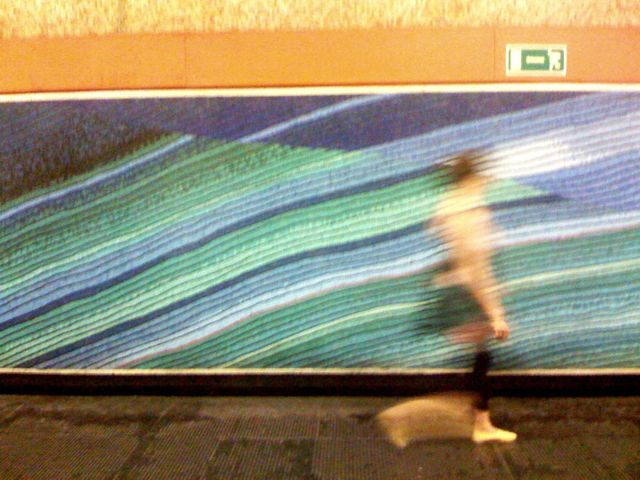
Where’s the Trevi Fountain?
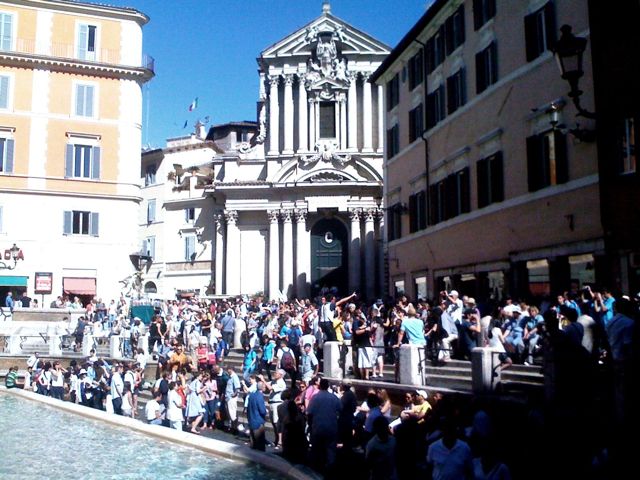
Where are the Spanish steps?
